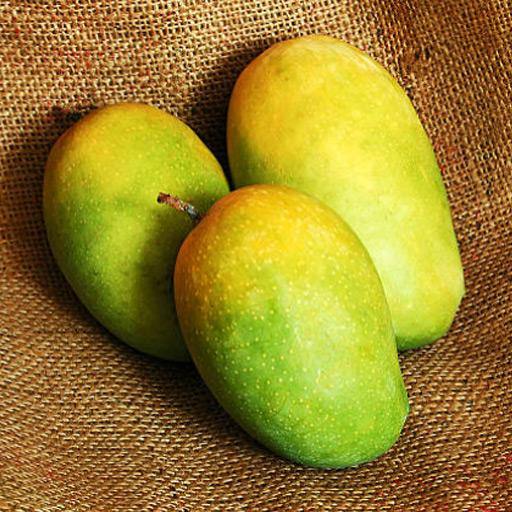The journey of a premium Gir Kesar mango doesn't end when it arrives at your doorstep—in many ways, it's just beginning. Proper storage and ripening techniques are essential to experience these golden treasures at their magnificent best. This guide will help you master the art of mango maturation and preservation to ensure every Kesar mango reaches its full potential.
Understanding Ripening: Nature's Process
Mangoes are climacteric fruits, meaning they continue to ripen after harvesting. This natural process involves:
- The conversion of starches to sugars
- Development of aromatics and flavor compounds
- Softening of flesh
- Color changes both externally and internally
For Gir Kesar mangoes, proper ripening is particularly important as it develops their signature saffron-colored flesh and distinctive aroma.
When Your Mangoes Arrive: Assessment
When you receive your box of premium Gir Kesar mangoes:
- Inspect each fruit for any damage during transit
- Assess ripeness levels - they may arrive at different stages
- Sort based on ripeness - this helps you plan consumption and storage
- Never refrigerate unripe mangoes - cold temperatures halt the ripening process
Natural Ripening Methods
Room Temperature Ripening
The simplest method for ripening Kesar mangoes:
- Place mangoes at room temperature (22-25°C/72-77°F)
- Keep away from direct sunlight
- Allow space between fruits for air circulation
- Expect ripening to take 2-5 days depending on initial state
The Paper Bag Technique
To accelerate ripening slightly:
- Place mangoes in a paper bag (never plastic)
- Fold the top loosely to trap ethylene gas (the natural ripening hormone)
- Check daily for ripeness
- For faster results, add a ripening banana or apple to the bag
Traditional Hay Ripening
For those with access to hay or straw:
- Layer hay in a shallow box
- Place mangoes on top with space between them
- Cover lightly with more hay
- Keep in a warm, dark place
- Check daily for ripeness progress
This traditional method helps develop optimal flavor and aroma.
Rice Burial Method
A traditional Indian technique:
- Fill a container with uncooked rice
- Gently bury the mangoes in the rice
- Cover and keep at room temperature
- Check daily until desired ripeness is achieved
The rice maintains steady temperature and absorbs excess moisture.
Signs of Perfect Ripeness
A perfectly ripe Gir Kesar mango will exhibit:
- Aroma: Strong, sweet fragrance
- Feel: Slight give when gently pressed (similar to pressing the flesh between your thumb and palm)
- Color: More yellow than green, possibly with slight reddish tones
- Skin: Small wrinkles appearing near the stem end
Remember: The strongest indicator of ripeness in Kesar mangoes is the intensity of aroma.
Storing Ripe Mangoes
Once your Kesar mangoes have reached optimal ripeness:
Short-term Storage (1-2 days)
- Keep at room temperature if consuming within 24-48 hours
- Place in a single layer, not touching each other
- Keep away from direct sunlight and heat sources
Refrigeration (3-5 days)
- Place ripe mangoes in the least cold part of your refrigerator
- Wrap individually in paper (not plastic) to prevent aroma transfer to other foods
- Allow to come to room temperature before eating for best flavor
Pre-cut Storage
If you've cut a mango but can't finish it:
- Cover cut surfaces tightly with food wrap
- Store in an airtight container in the refrigerator
- Consume within 24 hours for best quality
Freezing for Long-term Preservation
To enjoy your Gir Kesar mangoes beyond the season:
Freezing Pulp
- Wait until mangoes are perfectly ripe
- Peel and remove the seed
- Purée the flesh or cut into chunks
- Add a squeeze of lemon juice to help preserve color (optional)
- Pack in airtight containers leaving 1/2 inch headspace
- Label with date and freeze for up to 6 months
Freezing Cubes
- Cut ripe mango flesh into cubes
- Arrange on a parchment-lined tray without touching
- Freeze until solid (2-3 hours)
- Transfer to freezer bags, removing as much air as possible
- Use within 6 months for smoothies, desserts, or thawed snacks
Common Mistakes to Avoid
- Refrigerating unripe mangoes: This halts the ripening process and prevents flavor development
- Stacking too many together: Creates pressure points and bruising
- Using plastic bags: Traps moisture and can lead to mold growth
- Placing near strong-smelling foods: Mangoes absorb odors easily
- Rushing the process: Each mango ripens at its own pace; patience yields better results
Special Considerations for Gir Kesar
Compared to other mango varieties, Gir Kesar has some unique characteristics that affect storage and ripening:
- Higher sugar content can accelerate ripening in warm conditions
- The distinctive aroma is more pronounced when properly ripened
- The saffron color develops more intensely with proper ripening techniques
- Premium Kesar mangoes may have slightly thinner skin, requiring gentler handling
Serving at Peak Perfection
For the ultimate Gir Kesar experience:
- Remove from refrigeration 1-2 hours before serving
- Serve at room temperature for maximum flavor appreciation
- Consider temperature contrast desserts (slightly chilled mango with warm accompaniments)
- Experience the aroma first before tasting—it's part of the complete sensory experience
The AamKesari Promise
At AamKesari, we carefully select and ship our Gir Kesar mangoes to ensure they arrive in optimal condition for home ripening. By following these guidelines, you'll be able to experience the extraordinary quality and flavor that make these mangoes so special.
We believe that proper storage and ripening are essential parts of the premium mango experience—that's why we're committed to helping our customers master these simple techniques.
Pre-order your premium Gir Kesar mangoes today from AamKesari and prepare to experience mango perfection with these expert ripening techniques.





